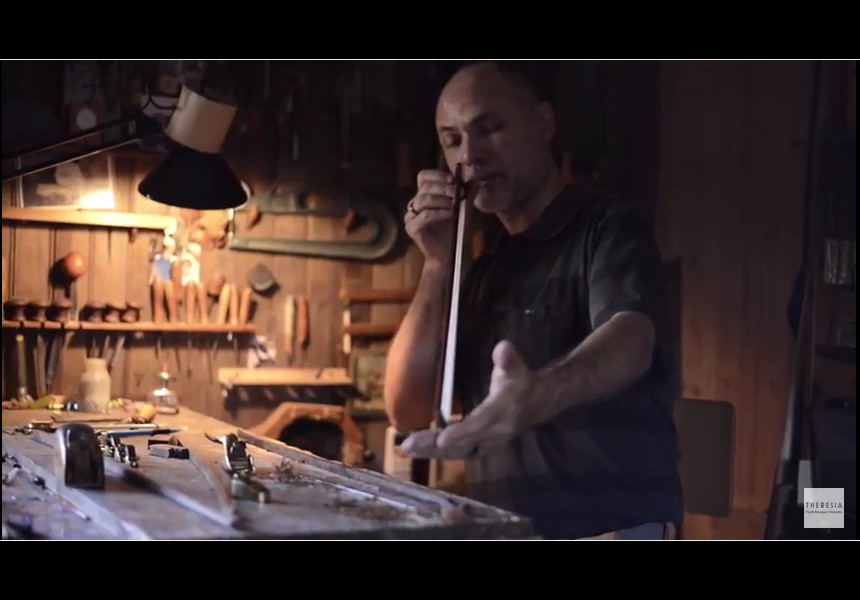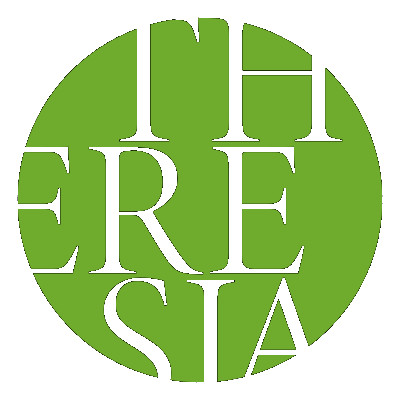
Violin players (but also viola, cello e double-bass players) know it well: the perfect instrument is a set of components that one must look for, trying and trying again. The shape of the wood, the strings, and also the bow: nothing is standard, and especially musicians devoted to performance on period instruments know it. Because every repertoire wants the right instrument, and performing music of different periods (baroque, classical, romantic, modern) with the same instrument means losing so much in terms of nuances, sound articulation, timbre.
It is the great lesson of the music philology applied to the performance, a current of thought that since the 60s of the twentieth century made it possible to rediscover forgotten repertoires and opened a way of studying and playing respectful of the sources, focused on the retrieval of the original sound.
Since then, playing on historical instruments has become an established practice, and Theresia joins to this way of thinking and playing the music: in particular, the classical repertoire has always been at the heart of the educational and artistic identity of our orchestra, that over the years has studied, performed in concert and recorded pages by Mozart, Haydn, Johann Christian and Wihlelm Friedman Bach, Luigi Boccherini, Martin Kraus. The classical bow is an indispensable tool for the study of this repertoire. Classical bows – lighter and easier to handle than modern ones, longer and tooled than baroque ones – are however less used in teaching in Universities and music schools. In general, young musicians do not own one, preferring to use the baroque bow, perfect for the XXVII Century repertoire, but less suited – both technically and artistically – to the music composed in the second half of the XVIII century.
So we thought of a crowdfunding campaign to purchase classical bows to put to the disposal of our musicians, precisely because the experience with Theresia has an educational purpose, which is to give to those who belong to the tools to succeed professionally then (in the orchestra and with chamber groups, and also, why not, as a solo artist or a teacher).
The bow maker Eduardo Gorr says that “the classic bow is very important to play the classical repertoire. Through this instrument – because it is in effect an instrument – the musician handles all the phrasing of the interpretation. The way this wooden stick vibrates has a direct impact on the articulation, on the dynamics, on the tonal color, and that’s what makes the string instrument so special. The musicians find themselves choosing spontaneously the arcades that – better than others – work best with that very bow; and the phrasing becomes closer to what the composers had in mind.”
The making of a good bow is a complex job, “madeed of both a technical aspect, and an artistic and intuitive one, as always happens in the case of any object that has an artistic component. The only way to get the most is to make a totally customized work, with total precision: I am not thinking of doing many arches but I try to make them at best.”
The construction of a classic bow is a work of fine craftsmanship and a bow costs about 2000 Euro: our aim is to buy four of them by the end of 2016, and to do this we started a crowdfunding campaign. The goal of the fundraising is € 10,000: in addition to the purchase of four classic bows by the end of 2016, the donations will support the costs of this same campaign of crowdfunding on the website ULULE. If this target will be exceeded, one or more additional bows will be purchased, according to what has been actually raised. Now it’s up to our supporters: we count on you. Discover on the crowdfunding page prizes that we will give to those who adhere to #ARCHETYBO campaign!
[button url=”http://www.ulule.com/archetybo/” new_tab=”false” size=”medium” style=”solid” color=”true” light=”false”]JOIN #ARCHETYBO AND HELP US TO BUY CLASSIC BOWS FOR OUR MUSICIANS![/button]
I violinisti (ma anche i violisti, i violoncellisti, i contrabbassisti…) lo sanno bene: lo strumento perfetto è un insieme di componenti da cercare, provare e riprovare. La forma del legno, le corde ed anche l’archetto: non c’è nulla di standard, e lo sanno soprattutto i musicisti che si dedicano all’esecuzione su strumenti originali. Perchè ogni repertorio vuole lo strumento giusto, ed eseguire musiche di diversi periodi (barocca, classica, romantica, moderna) con lo stesso strumento significa perdere molto in termini di sfumature, articolazione del suono, timbro.
E’ la grande lezione della filologia musicale, che a partire dagli anni ’60 del Novecento non solo fece riscoprire repertori dimenticati ma soprattutto inaugurò un modo di studiare e di suonare rispettoso delle fonti e tutto proiettato alla restituzione del suono originale.
Da allora, suonare su strumenti storici è diventata una prassi consolidata, e anche l’orchestra Theresia vive di questo spirito: in particolare, il repertorio classico è da sempre al centro dell’offerta formativa ed artistica della nostra orchestra, che negli anni ha studiato, suonato in concerto e registrato pagine di Mozart, Haydn, Johann Christian e Wihlelm Friedman Bach, Luigi Boccherini, Martin Kraus. L’arco classico è un mezzo indispensabile per lo studio di questo repertorio, ma gli archi classici – più leggeri e maneggevoli di quelli moderni, più lunghi e lavorati di quelli barocchi – sono tuttavia poco usati nella didattica dei Conservatori e delle Scuole di musica. I giovani musicisti in generale non ne possiedono uno, preferendo l’uso dell’arco barocco, poco adatto sia tecnicamente che artisticamente alle musiche del Secondo Settecento.
Ecco dunque l’idea di un crowdfunding per acquistare archi classici da mettere a disposizione dei nostri musicisti, proprio perchè l’esperienza con Theresia ha uno scopo formativo, ovvero quello di dare a chi ne fa parte gli strumenti per poi affermarsi professionalmente come strumentista (in orchestra, ma anche in formazioni da camera, e anche, perchè no, come solista o didatta).
Come spiega l’archettaio Eduardo Gorr, “l’arco classico è importantissimo per suonare il repertorio classico. Il musicista attraverso questo attrezzo, questo strumento – perchè è uno strumento – gestisce tutto il fraseggio dell’interpretazione. Il modo in cui questa bacchettina di legno vibra incide direttamente sulle articolazioni, i giochi dinamici, il colore timbrico, ed è quello che rende così speciale lo strumento ad arco. Il musicista si trova spontaneamente a scegliere delle arcate che funzionano meglio con questo arco e il fraseggio diventa più aderente sicuramente a quello che quei compositori allora avevano accanto.”
La costruzione di un buon arco è un lavoro complesso, “composto da un aspetto tecnico e da un aspetto artistico e intuitivo come nel caso di quasiasi oggetto che abbia una componente artistica. L’unico modo per ottenere il massimo è fare un lavoro totalmente personalizzato e con una precisione totale, non pensando a farne tanti ma pensando a farne al meglio.”
La costruzione di un arco classico è un lavoro di altissimo artigianato e un arco costa circa 2000 Euro: l’obiettivo della campagna di crowdfunding è acquistarne quattro entro la fine del 2016, e per fare questo abbiamo dato il via a una campagna di crowdfunding. L’obiettivo è di 10.000 Euro, cifra che comprende la commissione di 4 archetti e la copertura dei costi di gestione della campagna stessa. Ora tocca ai nostri sostenitori: contiamo su di voi. Scoprite sulla pagina di crowdfunding i premi che abbiamo riservato a chi aderirà alla campagna #ARCHETYBO!
[row padding_top=”” padding_bottom=”” bg=”” bg_light=”true” appear=”false”]
[button url=”http://it.ulule.com/archetybo/” new_tab=”false” size=”medium” style=”solid” color=”false” light=”false”]VAI AL CROWDFUNDING E SOSTIENI #ARCHETYBO[/button][/row]


